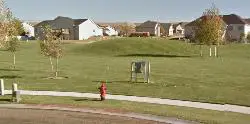Sledding
Sledding is a beloved winter activity for people of all ages, and for good reason! Who doesn't love careening down a snowy hill at high speeds, feeling the cold wind in their face and the thrill of the ride? If you're looking to join in on the fun, read on for all the details on the what, where, whys, and hows of sledding down sledding hills.
Sledding, also known as sledging or tobogganing, is the act of riding down a hill on a sled. Sleds can be made of a variety of materials, such as wood, plastic, or metal, and come in all shapes and sizes. Some popular types of sleds include saucers, tubes, and traditional sleds with runners.
Sledding hills can be found just about anywhere there's snow and a clear slope. Some popular places to go sledding include parks, ski resorts, and even backyard hills or piles made by a snow plow. Just find a hill that is not too steep or icy, and make sure it is clear of any obstacles.
Sledding is a great way to get outside and enjoy the winter weather, burn off some energy, and have a ton of fun. It's also a cheap and easy activity that requires minimal equipment, making it accessible to just about anyone. When you're ready to go, sit or lay on your sled and push off with your feet to start your descent. Lean back to control your speed and steer with your feet or hands. And most importantly, remember to have fun!
So why wait? Grab your sled and head to the nearest hill for a thrilling day of sledding. Just be sure to stay safe and follow all rules and regulations. Happy sledding!
Here's some of our favorite sledding hills

Bear Gulch
Ashton, Idaho
9.7 miles NE of Ashton, IdahoBear Gulch is an abandoned ski hill out of operation since 1969. While the vegetation is beginning to take over, there's still some great sledding to be had. It's just far enough into the...
Camp, Cross-country Ski, Hike, Sled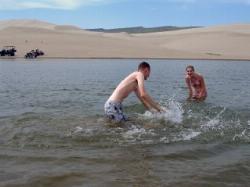
Egin Lakes
Saint Anthony, Idaho
8.9 miles W of Saint Anthony, IdahoEgin Lakes is one of the favorite gateways to the St. Anthony Sand Dunes. The lakes themselves are unusually shallow and where you'll actually find a lake depends greatly on what time of the...
Sled, Swim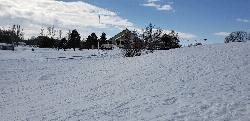
Teton Lakes Golf Course
Rexburg, Idaho
1.7 miles NW of Rexburg, IdahoThis golf course is open year round, for golfing in the summers to cross country skiing in the winter. During the winter the course has over two miles of groomed cross country ski trails. You can...
Cross-country Ski, Sled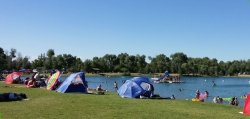
Jefferson County Lake (AKA Rigby Lake)
Rigby, Idaho
2.0 miles N of Rigby, IdahoRigby Lake has long been a favorite swimming hole for those in the area. The county has taken it well under its wing and made it a buzzing spot on any warm summer day. Along with the long standing...
Camp, Canoe, Dive, Kayak, Sled, Swim 0.1 mi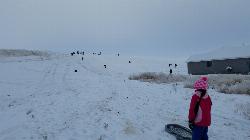
Founder's Square Hill (Under the Water Tower)
Rexburg, Idaho
1.8 miles SE of Rexburg, IdahoThis is a great sledding hill. It's about the perfect steepness and really wide. It's also big enough to make it worth a little run on a snowboard or an inner tube. While this is a pretty...
Sled 0.1-0.5 mi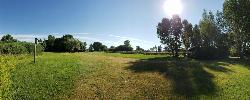
Eagle Park
Rexburg, Idaho
0.9 miles N of Rexburg, IdahoEagle Park is a little urban oasis. Once you drive in to this cottonwood forest along the river, you may forget that you're still inside Rexburg city limits. You can camp, picnic, throw rocks in...
Camp, Hike, Mountain Bike, Sled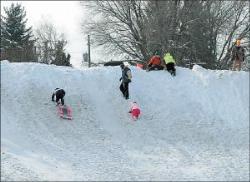
Smith Park
Rexburg, Idaho
1.0 miles E of Rexburg, IdahoWhen the snow piles up in the streets, the wonderful city of Rexburg moves the snow to the park. It gets piled on the side of the road on top of what is a small sledding hill to start with. The hill...
Sled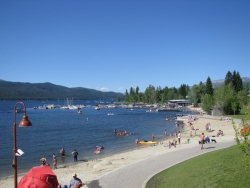
Mccall Area
McCall, Idaho
10.4 miles NE of McCall, IdahoMcCall is a beautiful resort town located in western Idaho, two hours north of Boise. It's feautures a multitude of activity of activities in both the Winter and Summer months, including:...
Backpack, Camp, Canoe, Cross-country Ski, Hike, Kayak, Mountain Bike, Sled, Snowshoe, Swim 0.4-0.7 mi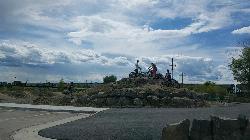
Rexburg Bike Park
Rexburg, Idaho
0.8 miles NE of Rexburg, IdahoIt's a small but great bike park for all ages; if you are a beginner, then this is the bike park to go to. The mounts are a decent size and approximately 4-6 mounts in different sizes for the...
Mountain Bike, SledHidden Valley Park
Rexburg, Idaho
1.3 miles E of Rexburg, IdahoSled near Rexburg, Idaho
Sled- Plan Ahead and Prepare. Know the regulations and special concerns for the area you'll visit. Prepare for extreme weather, hazards, and emergencies. Schedule your trip to avoid times of high use. Visit in small groups when possible. Consider splitting larger groups into smaller groups. Repackage food to minimize waste. Use a map and compass to eliminate the use of marking paint, rock cairns or flagging.
- Travel & camp on durable surfaces. Durable surfaces include established trails and campsites, rock, gravel, dry grasses or snow. Protect riparian areas by camping at least 200 feet from lakes and streams. Good campsites are found, not made. Altering a site is not necessary.
- Dispose of waste properly. Pack it in, pack it out. Inspect your campsite and rest areas for trash or spilled foods. Pack out all trash, leftover food and litter. Deposit solid human waste in catholes dug 6 to 8 inches deep, at least 200 feet from water, camp and trails. Cover and disguise the cathole when finished. Pack out toilet paper and hygiene products. To wash yourself or your dishes, carry water 200 feet away from streams or lakes and use small amounts of biodegradable soap. Scatter strained dishwater.
- Leave what you find. Preserve the past: examine, but do not touch cultural or historic structures and artifacts. Leave rocks, plants and other natural objects as you find them. Avoid introducing or transporting non-native species. Do not build structures, furniture, or dig trenches.
- Minimize campfire impacts. Campfires can cause lasting impacts to the environment. Use a lightweight stove for cooking and enjoy a candle lantern for light. Where fires are permitted, use established fire rings, fire pans, or mound fires. Keep fires small. Only use sticks from the ground that can be broken by hand. Burn all wood and coals to ash, put out campfires completely, then scatter cool ashes.
- Respect wildlife. Observe wildlife from a distance. Do not follow or approach them. Never feed animals. Feeding wildlife damages their health, alters natural behaviors, and exposes them to predators and other dangers. Protect wildlife and your food by storing rations and trash securely. Control pets at all times, or leave them at home. Avoid wildlife during sensitive times: mating, nesting, raising young, or winter.
- Be considerate of other visitors. Respect other visitors and protect the quality of their experience. Be courteous. Yield to other users on the trail. Step to the downhill side of the trail when encountering pack stock. Take breaks and camp away from trails and other visitors. Let nature's sounds prevail. Avoid loud voices and noises.




